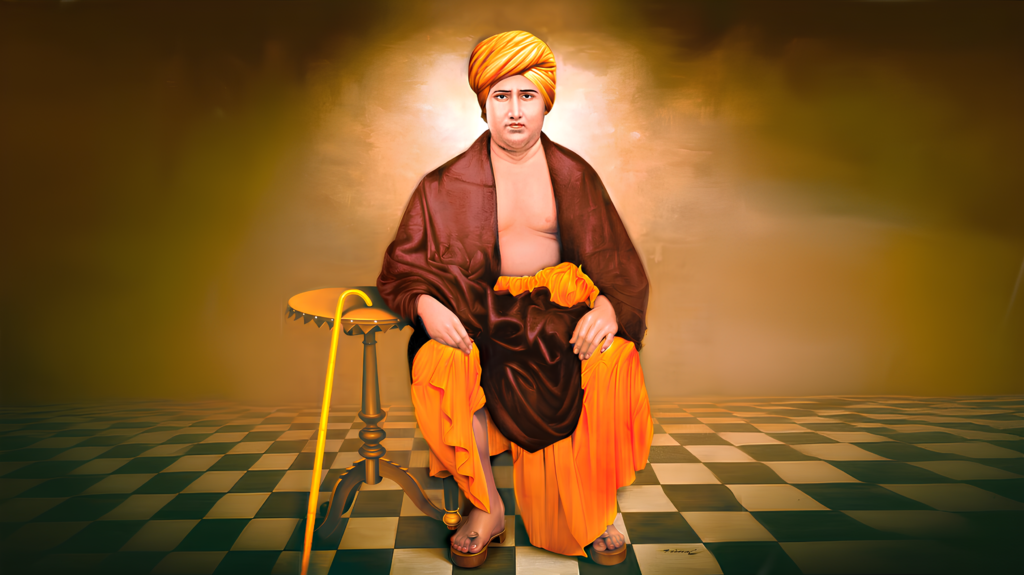Kāma in Sanatan Dharma: The Essence of Desire and Its Role in Life

- Kāma in Sanatan Dharma: The Essence of Desire and Its Role in Life
- Kāma – Beyond Just Desire
- Kāma in Sanatan Dharma: A Multifaceted Concept
- The Importance of Brahmacharya in Youth
- Misunderstandings About Kāma: Sexuality and More
- Vedic Teachings on Desire: The Purpose of Life Stages
- The Eight Ways to Control Desire
- Kāma as a Purushartha: Its Place Among Dharma, Artha, and Moksha
- The Debate Within Sanatan Dharma: Different Views on Kāma
- Sculptures, Art, and the Expression of Kāma in Temples
- Conclusion: The Right Balance Between Desire and Duty
Namaste Shikshanarthi’s!
Desire, or kāma, is one of the essential components of life, as highlighted in the teachings of Sanatan Dharma. While often misunderstood as merely sexual desire, kāma encompasses all forms of worldly pleasures and joys. But how do we balance this desire with righteousness? Let’s journey through the rich history of Vedic teachings to uncover the true nature of kāma and its role in human life.
Kāma – Beyond Just Desire
Once upon a time, in the vast and timeless universe of Sanatan Dharma, desire was viewed not as a forbidden force but as a natural part of life. Kāma, which translates to desire or pleasure, was seen as an integral part of human existence. But kāma is not just about physical desire. It includes all forms of worldly pleasures—whether it’s the joy of learning, the satisfaction of achievement, or the happiness of relationships.
Imagine living in a world where everything you desire—love, beauty, happiness—is considered a natural part of life. That’s exactly how our ancient sages viewed kāma. It wasn’t something to be avoided, but something to be understood and balanced with other aspects of life.
Kāma in Sanatan Dharma: A Multifaceted Concept
In the grand tradition of Sanatan Dharma, kāma plays a significant role. Sanatan Dharma is unique in that it is decentralized—meaning there is no single book or single teacher that everyone follows. For thousands of years, wise men and women have found different paths to understanding the world, all of which lead to the same truth.
The greatness of Sanatan Dharma lies in its inclusivity. It offers people the freedom to choose their own path toward spiritual growth, including how they deal with desires. While some paths advocate celibacy, others, like the Tantric tradition, consider desire a sacred power that can be harnessed for spiritual development.
This freedom has, however, led to many different views. One such topic that sparks debate is kāma—with different traditions offering varying perspectives on how it should be handled.
The Importance of Brahmacharya in Youth
In the ancient Vedic period, life was divided into four stages, known as ashramas. The first of these stages was Brahmacharya—the period of student life. During this time, young boys and girls were expected to focus on learning, discipline, and understanding the world around them. It was a time of great importance because the habits developed during these years would shape their entire lives.
You can think of Brahmacharya as a time when children were like sculptors. Every skill they learned, every bit of knowledge they gained, was like carving out a beautiful statue. This statue was their future self. To ensure they didn’t get distracted from their work, the rules of Brahmacharya were strict: no indulgence in desires, especially sexual desires.
But why such restrictions? It wasn’t to punish young people, but to protect them from making mistakes that could harm their future. In ancient times, there was no concept of contraception, and a mistake could lead to social and physical hardships, particularly for girls. Hence, the focus was on building a strong mind and body free from distractions.
Misunderstandings About Kāma: Sexuality and More
When people hear the word “kāma” today, they often think of it only in terms of sexual desire. This is one of the biggest misunderstandings about kāma. Yes, sexuality is a part of kāma, but it is far from the whole picture. Kāma also refers to all kinds of desires—whether it’s the desire to succeed in your career, the desire for friendship, or even the desire for knowledge.
In fact, ancient texts like the kāmasūtra, which many people think of as a book solely about physical intimacy, are largely focused on the art of living. Only one part of the book talks about physical relationships, while the rest covers social behaviors, love, and how to live harmoniously with others.
This broad definition of kāma shows us that desire is not something bad. It’s a part of being human, and when it’s approached with wisdom and responsibility, it can lead to a fulfilling life.
Vedic Teachings on Desire: The Purpose of Life Stages
The Vedic teachings about life stages help us understand how kāma fits into the larger picture of human development. After the Brahmacharya Ashram comes the Grihastha Ashram, or the householder phase of life. In this phase, kāma plays an important role. But it is not just about indulging in desires; it’s about fulfilling them in a responsible way.
For example, during the householder stage, marriage and family life are seen as sacred. Desires are encouraged, but only if they align with one’s dharma (righteousness) and do not harm others. This balance is key to understanding how kāma should be handled in life.
The Eight Ways to Control Desire
In ancient times, sages provided us with eight important guidelines to help control desires, particularly those related to sexuality. These steps were designed to protect people from falling into traps that could distract them from their larger life goals. Let’s take a look at these eight ways:
1. Keep Your Thoughts Pure – Avoid thinking about desires, as thoughts can quickly lead to actions.
2. Avoid Conversations About Desires – Don’t talk about desires with friends, as it can increase temptation.
3. Stay Away from Temptations – Avoid situations or people that might stir up unwanted desires.
4. Watch Your Eyes – Don’t look at others in a way that stirs desire.
5. Be Honest – Don’t hide or sneak around when it comes to desires.
6. Keep a Firm Mind – Stay mentally strong and avoid weakening your resolve.
7. Don’t Make Desire the Center of Your Life – Even after completing Brahmacharya, don’t let kāma become your main focus.
8. Avoid Sexual Activities Until Marriage – Stay celibate until the right time
By following these steps, individuals could focus on their goals, be it education, career, or family life, without being overwhelmed by their desires.
Kāma as a Purushartha: Its Place Among Dharma, Artha, and Moksha
Kāma is one of the four purusharthas, or objectives of life, in Sanatan Dharma. These four are Dharma (righteousness), Artha (prosperity), Kāma (desire), and Moksha (liberation). Together, these objectives help a person lead a balanced and fulfilling life.
Kāma is important, but it is meant to be pursued alongside dharma and artha. If your desires harm your righteousness or your prosperity, then kāma becomes dangerous. But if it is pursued in balance, it brings joy and satisfaction to life.
The Debate Within Sanatan Dharma: Different Views on Kāma
As with many things in Sanatan Dharma, there are different views on how kāma should be approached. While some traditions, like the Vedic and Brahminical, stress the importance of celibacy and controlling desires, other traditions like Tantra see desire as a powerful and sacred force.
This difference of opinion has led to debates over the centuries. For instance, some say that sexual desire should only be for reproduction, while others believe that it can be enjoyed as long as it is within the bounds of dharma.
Sculptures, Art, and the Expression of Kāma in Temples
If you visit ancient temples in India, you might be surprised to see sculptures and artwork that depict intimate scenes. Why would such images appear on holy temples?
Some scholars believe that these sculptures represent the balance between worldly pleasures and spiritual life. Just as the sculptures show scenes of desire, they also remind us that when entering the temple, we leave these desires behind and focus on spirituality.
Others believe these images are part of sex education in ancient times, teaching people about human relationships in a respectful way. Regardless of the interpretation, these sculptures remind us that kāma, like any other aspect of life, has a rightful place but should be approached with care.
Conclusion: The Right Balance Between Desire and Duty
In conclusion, kāma is a natural and necessary part of life. It is not a sin, but it must be balanced with dharma (righteousness) and artha (prosperity) to ensure that it does not lead to harm or moral downfall. Desire, when pursued responsibly and in harmony with the larger goals of life, can bring great joy and fulfillment. However, when it is unchecked and indulged in without wisdom, it can cause imbalance and suffering.
Sanatan Dharma does not advocate for the complete rejection of desires, but it teaches us to understand their place in the larger journey of life. By learning to control and direct our desires, especially through the teachings of Brahmacharya, we can ensure that we lead a life that is both fulfilling and aligned with higher spiritual goals.
So, whether you are a young student focusing on your education, or a householder balancing family life and responsibilities, the key to happiness lies in understanding how to manage and balance kāma with the other important aspects of life. When done properly, kāma can support a life of dharma, artha, and ultimately lead to moksha (liberation).
In the end, kāma is not to be feared or rejected, but to be understood. Like a river that can nourish or flood a field, desire too can either enrich our lives or overwhelm us. The choice, as Sanatan Dharma teaches, is in how we manage that flow.


